I have never had writer’s block. I have had plenty of instances of “this is stupid and why are you making me write this garbage,” but I’ve always been able to write. On Thursday, December, 2, 2021, that all changed.
Since then, the only things I’ve written were for my blog. I didn’t write anything in my little book I carry in my pocket, which is full of things I want to write about, bits of stories, poems I’m fiddling with, and things I need to discuss with my therapist and doctor. I stopped writing in my journal, which, until December 2, I wrote in nearly every day. I write a lot of my stories and blog posts in a notebook. I ceased putting pen to paper.
Words matter to me, not just in my desire to write them to tell stories, but in the words you use to convey information to others matter. On December 2, words cut me to the core. They came from nowhere. I didn’t understand them or why they were being hurled at me. They were so devastating, only a small handful of people who are close to me know what happened.
For 46 days, I tried to write. I sat down, became overwhelmed with the thoughts in my mind, and couldn’t write. It was devastating. The desire to write was still there. The stories were still swirling in my mind. I just…couldn’t.
About 10 days ago, I learned about neurographic art therapy. I watched an overview about how it works and ran with it.
Russian Psychologist Pavel Piskarev developed neurographica in 2014. The idea is the art provides you direct access to your inner self. You don’t need to speak. You don’t need to use words to define what’s going on in your head. You’re drawing, listening to the sound of the pen, linking the conscious to the subconscious mind by activating the neurons, the connections in our brain cells.
I sat down and began drawing lines. In nature, things don’t grow in straight lines. They just grow. Neurograpic lines don’t go where they are expected.
When I was finished drawing lines, I began rounding the corners of every intersection, making everything smooth. It ends up creating something that looks like neurons in our brains.
I’m not sure I really like this one. I can’t decide which way is the correct way of viewing the piece or if it even matters. It’s too bold and the colors are too bright. Still, all of that says something about the art as well. I’m sure if said the red marker was the first pen I picked up when I started coloring, there’s some meaning in that, too.
One of the neat things about neurographic art is there is not limit to the number of lines. You can always add more. I added more lines before coloring because I didn’t like the amount of empty space. Before I began, I decided this piece would be colored solely with my set of blue markers. I know it’s teal, but it looks more green to me, so the finished piece is a bit disappointing to me. This is probably more to do with me and how I “see” colors than anything else.
I have found the drawing to be extremely calming. My brain seemingly pushes away all the awful things which were cycling in my mind and I just drew.
Gray is my favorite color. I love the ambiguity of its spelling – grey vs. gray – and I love how it is an intermediate between black and white. Our world is gray and I enjoy the beauty in it. So, I grabbed my gray markers and started coloring.
The process is relaxing and I enjoyed working on each piece. I like how it is not rigid, yet you still create something which was inside you all along. If I want to recreate something I see, I have a camera to do so. Neurographic art is another way for me to express my thoughts and feelings, without the confines of what people think of when they think of art.
I decided to go back to color for this one and use a plum-colored Sharpie instead of a black Sharpie for the initial drawing. The Sharpie was a bit darker than expected, but I think it worked well as a contrast to the colors.
Overall, the pieces I have completed took three to four hours from start to finish, but larger pieces could take many more hours or days to complete.
Since working on these, I’ve been able to write two new poems. I’m hoping my long-form writings start to come back to me. As well. For me, this is a great new tool for me in my trauma toolbox. Despite the things going on in my head, I was able to sit down and get some shit out, so that I could start feeling like me again.
It’s not perfect, but, I’m still learning. It will also never matter if it is perfect or not. It’s an expression of me, so, in a way, it will always be a perfect moment in time.
Feel free to play armchair psychologist in the comments about the drawings.
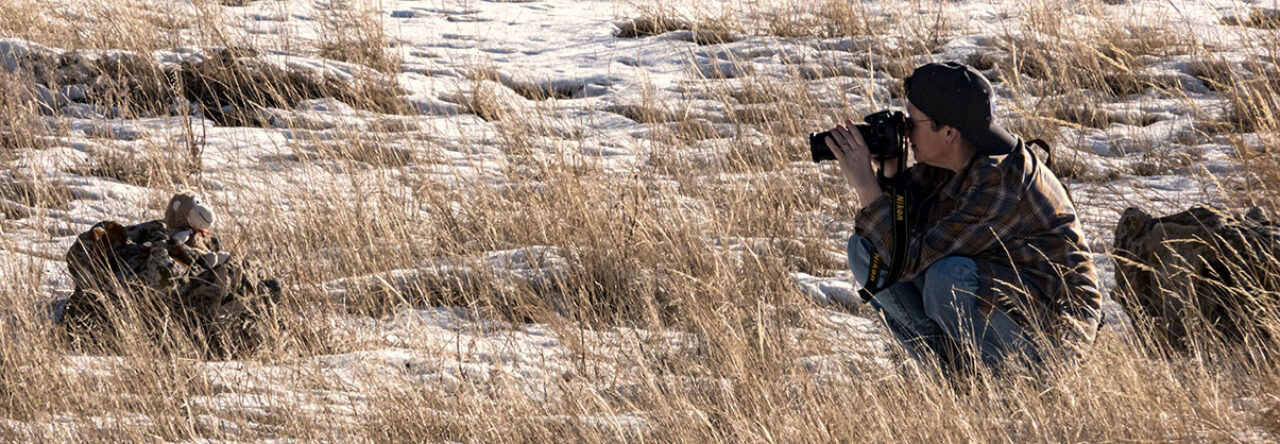
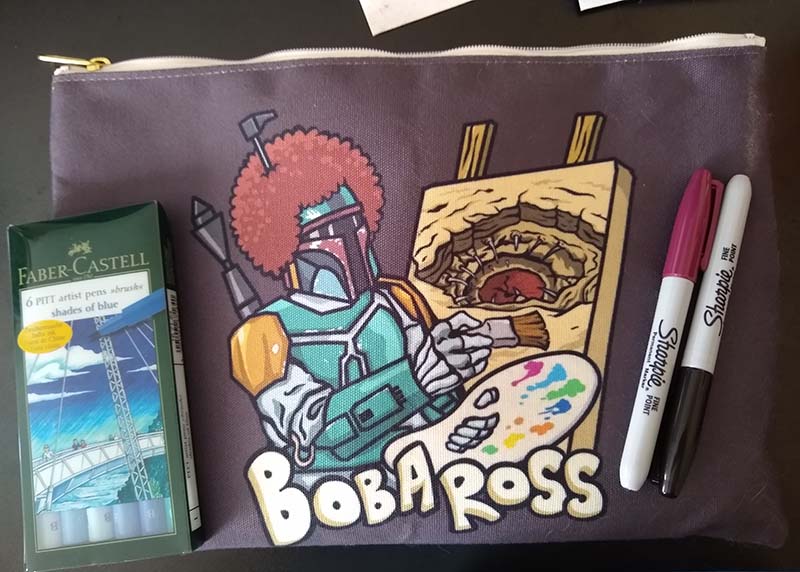
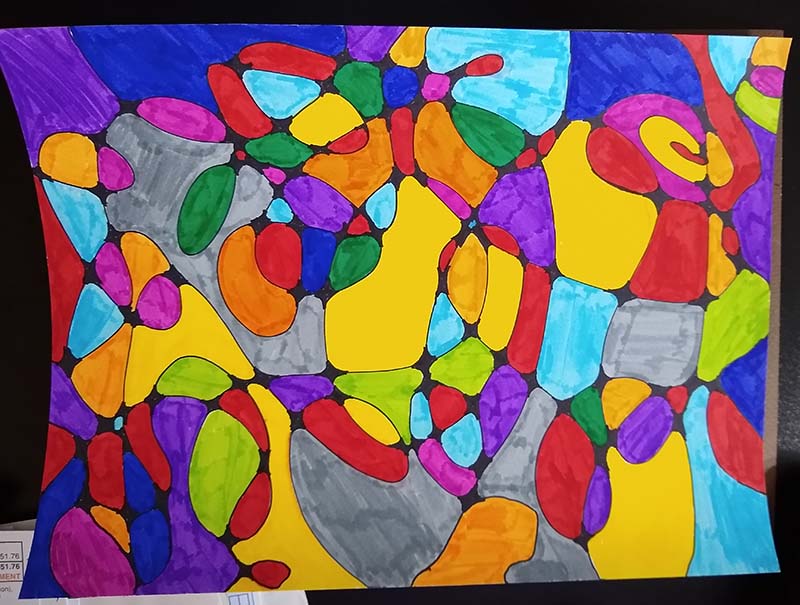
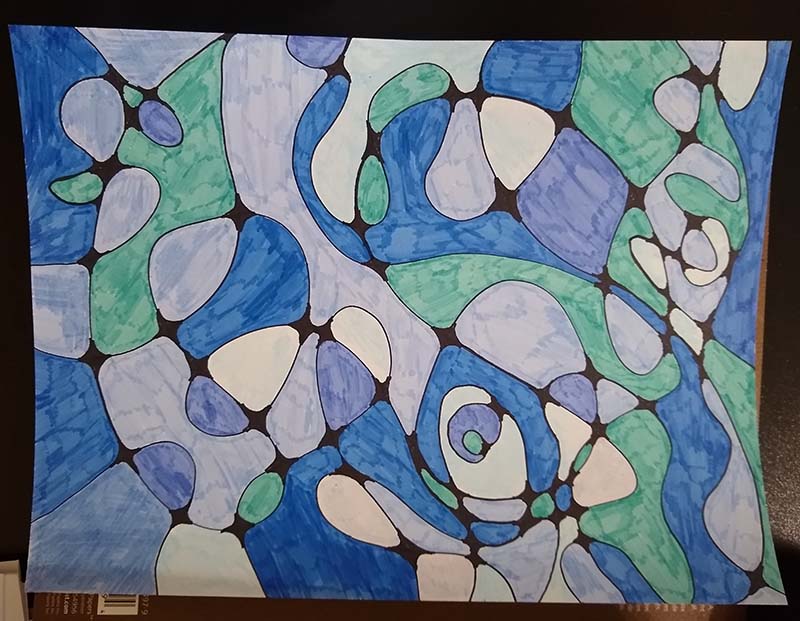
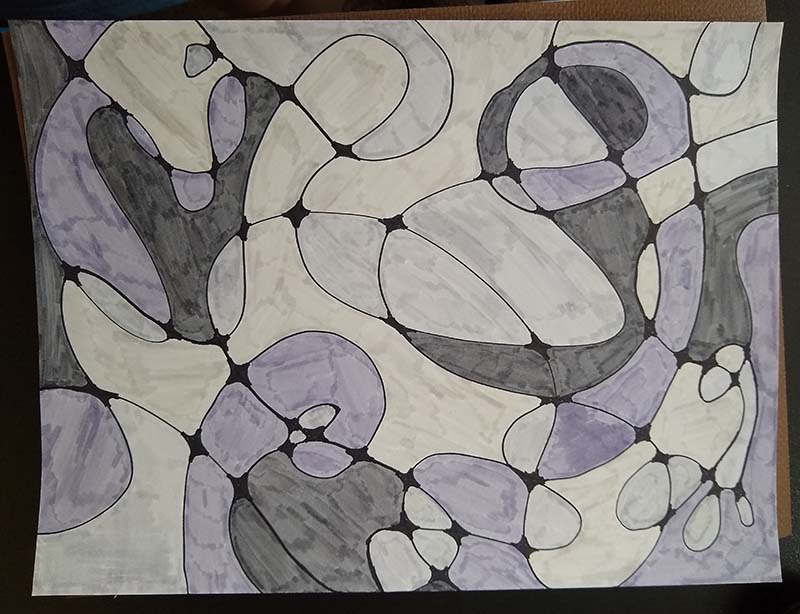
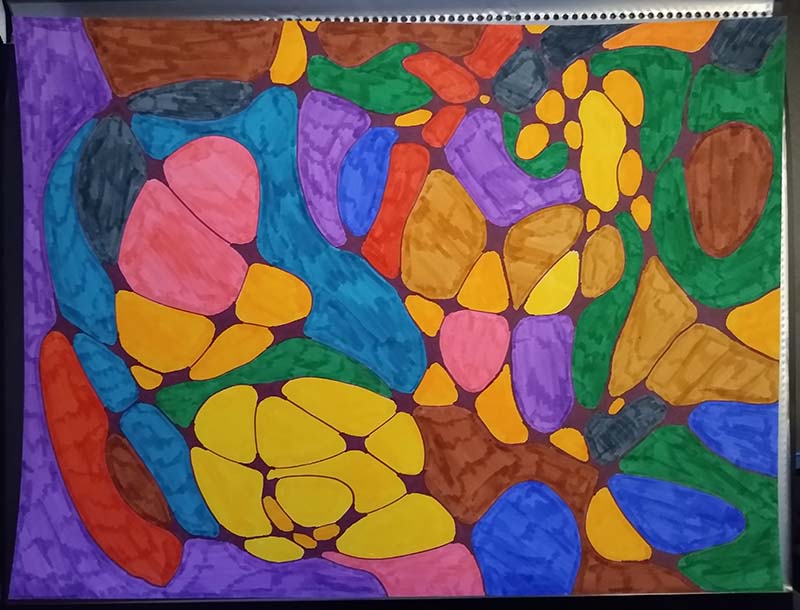
BARB BATIE
Perhaps it’s because farmers have to be eternal optimists, but I really like the two colored pieces. They speak to me that there is light at the end of your long-form writing block. I’m pretty sure the loss of your father-in-law and all the logistical problems associated with being able to grieve in person have impacted you and Paul as well. Hence the need for some grey-gray. Keep it up, this is an interesting and hopefully beneficial way to express yourself. My two cents.